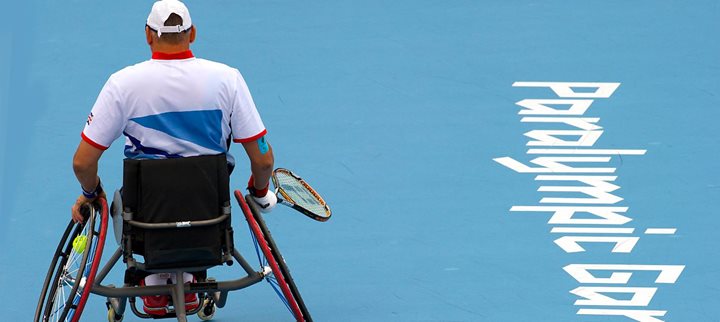Share:
Take it offline!
This Education in Motion resource is also available as a printable PDF.
Download PDF
Tennis is one of the world’s most popular sports. Its adapted format differs mainly with specially designed wheelchairs (sometimes manual and sometimes powered), as well as the ball being allowed to bounce twice.
The size of the court, the equipment (racket and ball) are just the same as in their Olympic namesake, as are the rest of the rules. In fact, the four Grand Slams all host wheelchair tennis as part of their official competitions.

Wheelchair tennis as recognised by official competitions.
We need to go back to the year 1976 to find the first mention of wheelchair tennis, when Brad Parks - a freestyle skier who became a paraplegic after a skiing accident - and his rehabilitation partner began to look into the possibility of adapting tennis to his disability.
In little over a year, they had already created regulations and in 1980, the National Foundation of Wheelchair Tennis was formed. From that point on, the sport became increasingly famous and soon began to expand its reach.

In terms of official competitions, wheelchair tennis debuted as an exhibition sport at the 1988 Seoul Games and was later incorporated into the Olympics in Barcelona. One year earlier, in 1991, the NEC Tennis Wheelchair Circuit had been created with its corresponding ranking system, which recognised both players and tournaments of the International Tennis Federation.
Since 1993, wheelchair tennis players have been able to compete on the professional circuit, allowing for the inclusion of the adapted format in the Grand Slams. The last to do so was Roland Garros in 2007.
At present, wheelchair tennis has more than 170 tournaments within the official circuit.
Wheelchair Tennis Competitions For 2018
The ITF (International Tennis Federation) publishes an annual calendar of UK and International competitions.
As well as the Australian Open, the USA Open, the French Open and Wimbledon, there are also various other international tournaments such as the Wheelchair World Team Cup and WTA Tokyo International, which is to be played in Hiroshima for 2018.

The specifics of wheelchair tennis
- The sport requires the use of specially designed wheelchairs. Due to the amount of turning and twisting involved, the frame and the wheels must be hard-wearing and light. As such, titanium wheelchairs are a good option as they are lightweight yet offer both stability and mobility.
- In wheelchair tennis, having a good serve or a powerful drive is just as important as placing the chair in the correct position before connecting with the ball. In fact, the ball is allowed to bounce twice (the second of which can even be out of bounds), precisely so that players can position themselves to return it. Of course, those who play at the very highest level try to return it at the first bounce.
- There are three categories in official wheelchair tennis competition (male, female and Quad), each of which can be played in both singles and doubles.
- Wheelchair tennis players in the Quad category are commonly quadriplegic (with paralysis in all four limbs), for which they use powered wheelchairs with the rackets attached to their hands.
The increasing popularity of the sport has led to the development of wheelchairs specifically designed for playing tennis. At Sunrise Medical we have a number of different models tailor made for tennis enthusiasts.
The Quickie Match Point has a patented weight adjustment system that allows players to set their preferred seat angle and maximise their natural centre of gravity.
The Quickie Match Point Ti wheelchair has a titanium seat structure, making it strong yet light - perfect for the most demanding players.
Amongst the RGK range is the Grand Slam, used by some of the top Paralympic champions in the world, made to order to provide a completely personalised chair that responds perfectly to every movement.
What is your preference?